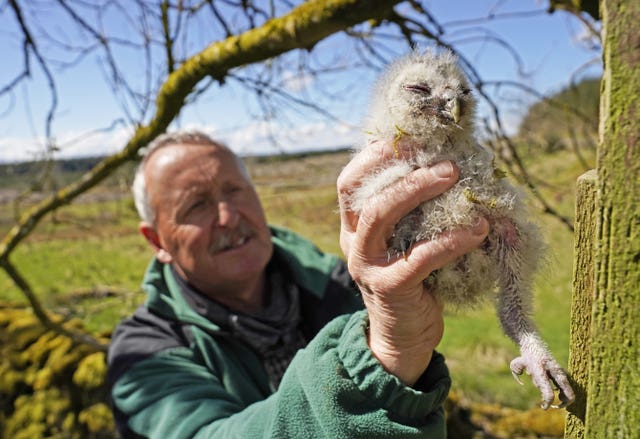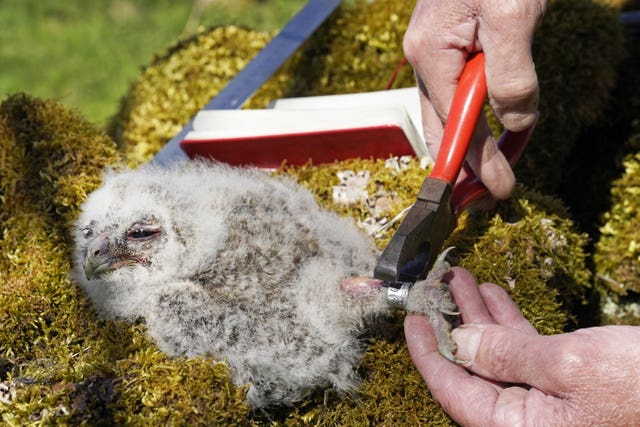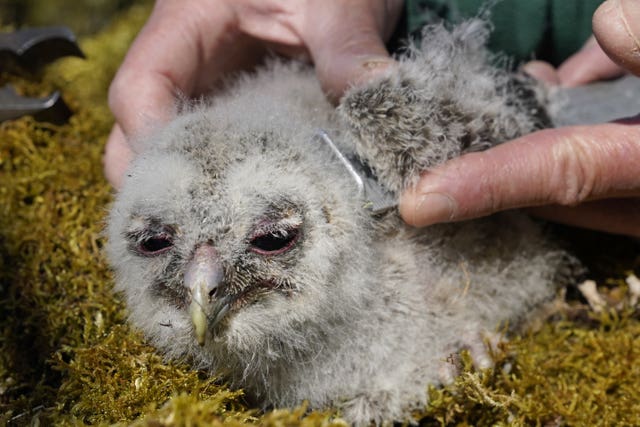Experts gain unique insight into lives of tawny owls in long-running study
The research in Kielder Forest, Northumberland, started more than 40 years ago and has seen thousands of chicks ringed.

Wildlife experts are continuing to work on the UK’s longest running study of tawny owls.
For more than 40 years, experts from Forestry England have researched the numbers breeding in Kielder Forest, Northumberland.
They have ringed thousands of chicks and developed an unprecedented insight into their lives, confirming they are real home birds who rarely venture more than a quarter-of-a-mile from where they are born.

Experienced ornithologist Martin Davison, who has been involved in the study since its early days, explained: “We have over 200 boxes erected across the forest to make up for the lack of natural tree hollows for birds to breed.
“This also makes it much easier for us to monitor populations from one year to the next.
“Chick numbers fluctuate due to the number of field voles around, a favourite prey, but the population is strong and stable.

“Each box is visited three times, first to count and weigh eggs, then to capture the adult owl to record its vital statistics, and finally to ring chicks.
“Young tawnies look fantastic, bundles of sleepy fluff that bring a smile to your face.”
Tawnies are not the only owl species doing well in Kielder.
Barn owls have also recovered after being nearly wiped out by the snowy winter of 2010, when temperatures plunged to minus 20C.

Tom Dearnley, a Forestry England ecologist, said: “Projects like the tawny owl one have helped make Kielder an exceptionally well-studied forest for its wildlife.
“Given the woodland was created less than 100 years ago it is truly amazing how biodiversity has flourished.
“It makes us very excited about the future.”





